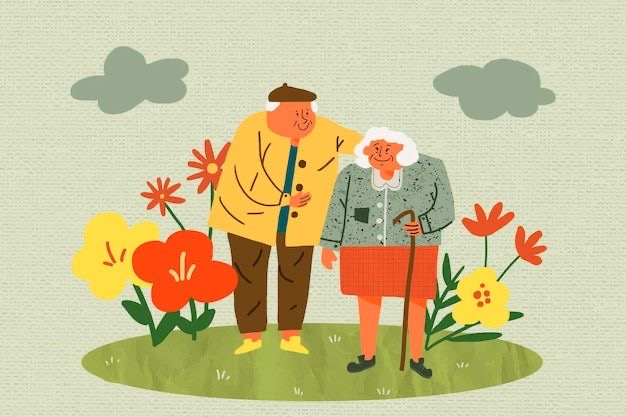Looking young doesn’t have to be important

Illustration by Chloe Latour.
When you think of aging, what image pops to mind? Retirement homes? An old lady with her cats? Wrinkles and crow’s feet? Maybe it just brings a sense of dread or a feeling of apprehension.
Anti-aging is a very present conversation these days. In my experience, it’s come up many times with friends and in social circles. Whether it’s Botox, anti-aging creams, or anti-wrinkle straws, many products and procedures meant to slow down or hide the effects of getting older are marketed to audiences of all ages. More and more people are buying into this marketing.
In my opinion, most of these products are trying to fix a problem that doesn’t exist. Aging is a natural process that happens to everyone and is a part of life. It isn’t painful nor is it wrong, so why try to stop it? The very simple answer is the pressure of living up to beauty standards.
This pressure to stay young and therefore “beautiful” has always existed, especially for women. It’s no secret that women are harshly judged by their looks. Beauty standards in general are rooted in the image of youth, as the standard is often clear, smooth skin, big eyes, and a glowy complexion.
These ideals are spread by celebrities, media, and tabloid articles with phrases like, “she looks good for her age” and “unproblematic people age better.” We often see images of older women that have been edited to get rid of wrinkles. Online, women are put down for looking “too old”, while others get applauded for still looking young. Our culture tells us we are more valuable if we adhere to these standards of looking young, so it makes sense for young girls to want to get a head start on preventing aging and older women to try to get rid of any signs of aging.
This effect is amplified by online spheres like TikTok. The people who do get the procedures or products rave about it online, influencing others to try it out. Dr. Sheila Farhang, a dermatologist in Arizona, said in a New York Times article that young people ask her about Botox purely because they have FOMO since their peers were using it.
TikTok and other social media platforms create a form of mass consumption. We feel the need to fit in with the new cool thing, whether it be a certain water bottle or style of clothing. It’s no wonder that Botox, like other trends, has become a way to fit in with the masses. Because of this, getting Botox and using age-delaying products has become so normalized that no one bats an eye when 20-year-olds say they want preventative Botox injections.
“You’re going to get a cosmetic procedure for the same reason you wear makeup: because every other woman is,” wrote the staff of Time Magazine in a piece called “Nip. Tuck. Or else.” The article was written in 2015, and at the time, anti-aging procedures were mainly associated with celebrities. These days, a future where most women get plastic surgery to fit in doesn’t seem so unimaginable.
On top of that, Botox and skincare aren’t cheap. A typical Botox session costs around $200–300, and for most procedures the patient needs to come back every 10 months for another round. Skincare products can run up to and even over $250, with high-end anti-aging creams costing hundreds of dollars. Companies producing these products are making millions each year off the back of women’s insecurities.
Without fear of appearing old from wrinkles or smile lines, these companies wouldn’t thrive the way they do. These worries are created and pushed into women’s minds until they are willing to pay to get rid of them.
The truth about aging is that it’s not up to us, it’s based on a person’s environment and genetics. We have little control over it, and that’s the way it should be.
Aging is not a bad thing. On the contrary, signs of aging show a life well lived. Smile lines and wrinkly skin are products of the sun, smiling, laughing, and expressing the range of human emotions. Aging paints our life on our skin. I think it is a privilege to be able to age and it shouldn’t be taken for granted, nor should we try to stop it.








